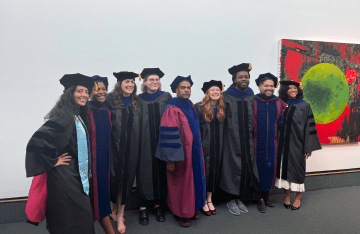From Philly to Delhi: the Inaugural Global Media Cultures International Doctoral Institute
Organized by the Center for Advanced Research in Global Communication (CARGC), the Institute convened students and faculty from Annenberg and the University of Hyderabad.
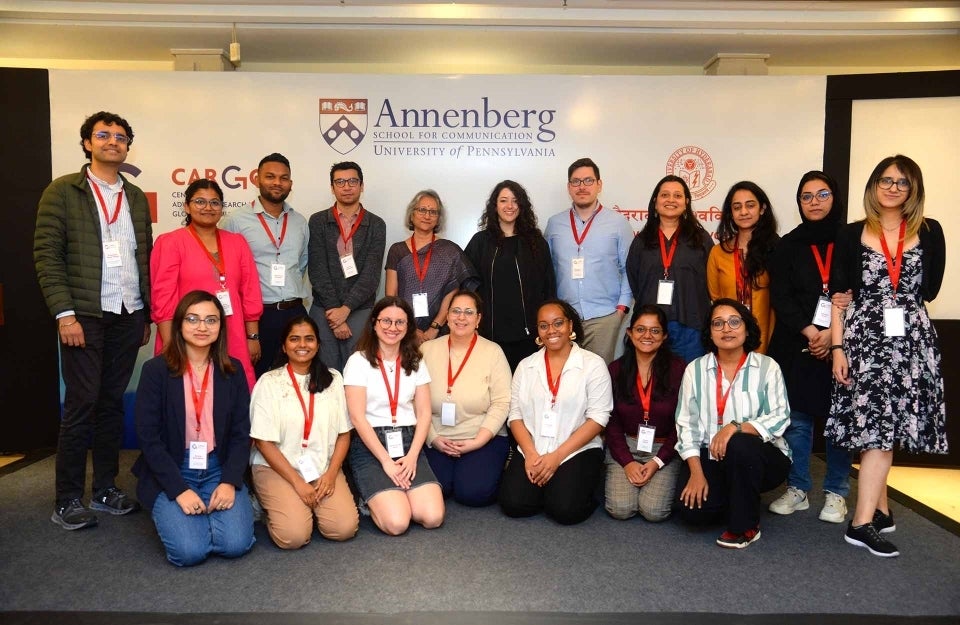
Institute attendees from both Annenberg and institutions in India, including the author, Sim Gill (far right)
Upon hearing of the Global Media Cultures International Doctoral Institute, an initiative organized by the Annenberg School’s Center for Advanced Research in Global Communication (CARGC) and the University of Hyderabad, my curiosity was immediately piqued.
The institute's overarching goal was clear: to forge a collaborative global network of scholars dedicated to advancing comparative research in media technologies and cultures, particularly within the Global South. Comprised of four components — lectures, professionalization workshops, dissertation research feedback sessions, and site visits in New Delhi, India — the institute aimed to provide a comprehensive platform for scholarly exchange and growth.
As a second-year Ph.D. student at Annenberg and a fellow at CARGC, the prospect of engaging in interdisciplinary dialogue with scholars from various geographical and cultural backgrounds excited me immensely, offering a unique opportunity for intellectual enrichment and collaboration with individuals I would otherwise not have the chance to meet., such as Ph.D. students from universities in India. Certainly, it's crucial to acknowledge the disparities in opportunities faced by students from universities in India seeking academic experiences in the United States compared to our own relatively smoother access to travel (visas withstanding!). This highlights a key part of this institute in both recognizing and challenging structural barriers and inequalities that may impede global academic exchange while also recognizing the complexities inherent in such endeavors.
Once we landed in New Delhi, our days were packed with exploration of the dynamic field of global media and communication studies — and a cricket game thrown in for good measure.
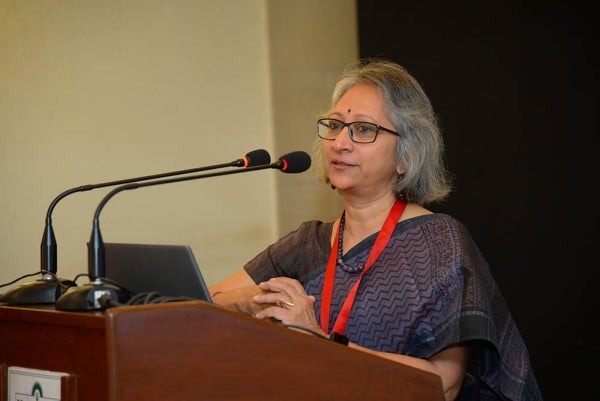
The program commenced with a session entitled "Doing Media Studies Now," led by Professor Usha Raman from the University of Hyderabad, who was virtually joined by CARGC Director and Annenberg Professor Aswin Punathambekar. (Unfortunately, he was unable to attend in person due to injury.)
Over the following days, we delved into a variety of topics, ranging from the global reach of television to the impact of media on migration narratives, guided by esteemed scholars Professor Rahul Mukherjee and Professor Juan Llamas-Rodriguez, Assistant Director of CARGC.
Eszter Zimanyi, senior research manager at CARGC, led a thought-provoking lecture on using waste as a theoretical framework to understand the ongoing European refugee crisis. Our conversations explored the emotional and representational dimensions of media production, emphasizing the importance of recognizing real injustices and indignities that require our attention and care.

The second segment of our institute comprised professional workshops designed to equip doctoral students with essential skills for success in academia and beyond. Covering topics like academic publishing and public speaking, these sessions provided invaluable resources for navigating both scholarly and alternative career paths.
A standout moment occurred during a public speaking workshop when Pratekshit “Kanu” Pandey, a former Annenberg doctoral student now an assistant professor at the University of California, Santa Barbara, shared an insightful sentiment: “You're hot, and your research is hot too.” While the phrasing was definitely meant to elicit a laugh — and it did! — his comments underscored the notion that our research reflects years of dedication and hard work, resulting in compelling and significant contributions. Despite the occasional presence of imposter syndrome, we must remind ourselves of the effort we've invested and the value our work holds. Challenges and critiques of our ideas are not failures but new avenues with which to think with.
Undoubtedly, one of the most significant aspects I've gained from the trip is the opportunity to delve into other people's research and immerse myself in a different environment, providing the time and space to engage deeply with ideas. While we may interact regularly, it's often challenging to uncover the deeper layers of conversation. Thus, having dedicated time and space for this exploration was a definite highlight and a key factor in the trip's appeal.
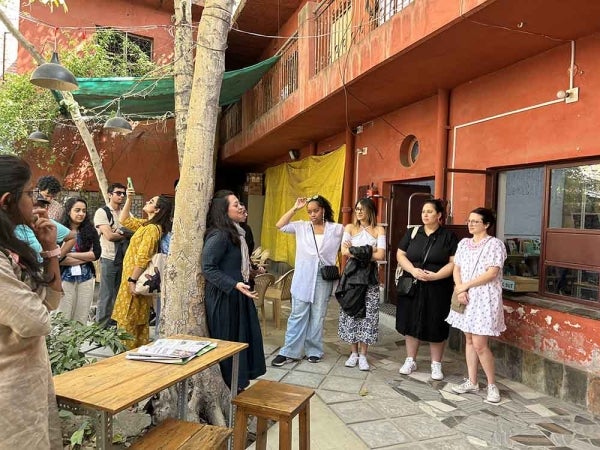
Our journey concluded with enlightening site visits led by Rabani Garg, a knowledgeable local and CARGC fellow. We toured spots like the Community Library Project. This is a part of India's free library network advocating for an anti-caste, publicly owned, accessible library system for all, challenging the normalization of the lack of free libraries in India as an initial step towards this goal.
Additionally, we visited the Simurgh Center, which facilitates artistic exchanges and collaborations among Afghan, Indian, and German practitioners living in New Delhi. Here, we were able to interact with zines and films that had been recently produced, centered mainly on themes of displacement, home, and connection. These experiences deepened our appreciation for the diverse activist efforts shaping the region's politics.
And, of course, being tourists, our group made a visit to Humayun's Tomb, where some of us found ourselves stopped by locals for selfies, briefly experiencing a sense of celebrity. This moment was a reminder of the complexities of our experiences as travelers in different cultures, where our presence as outsiders intersected with the daily lives and realities of locals.
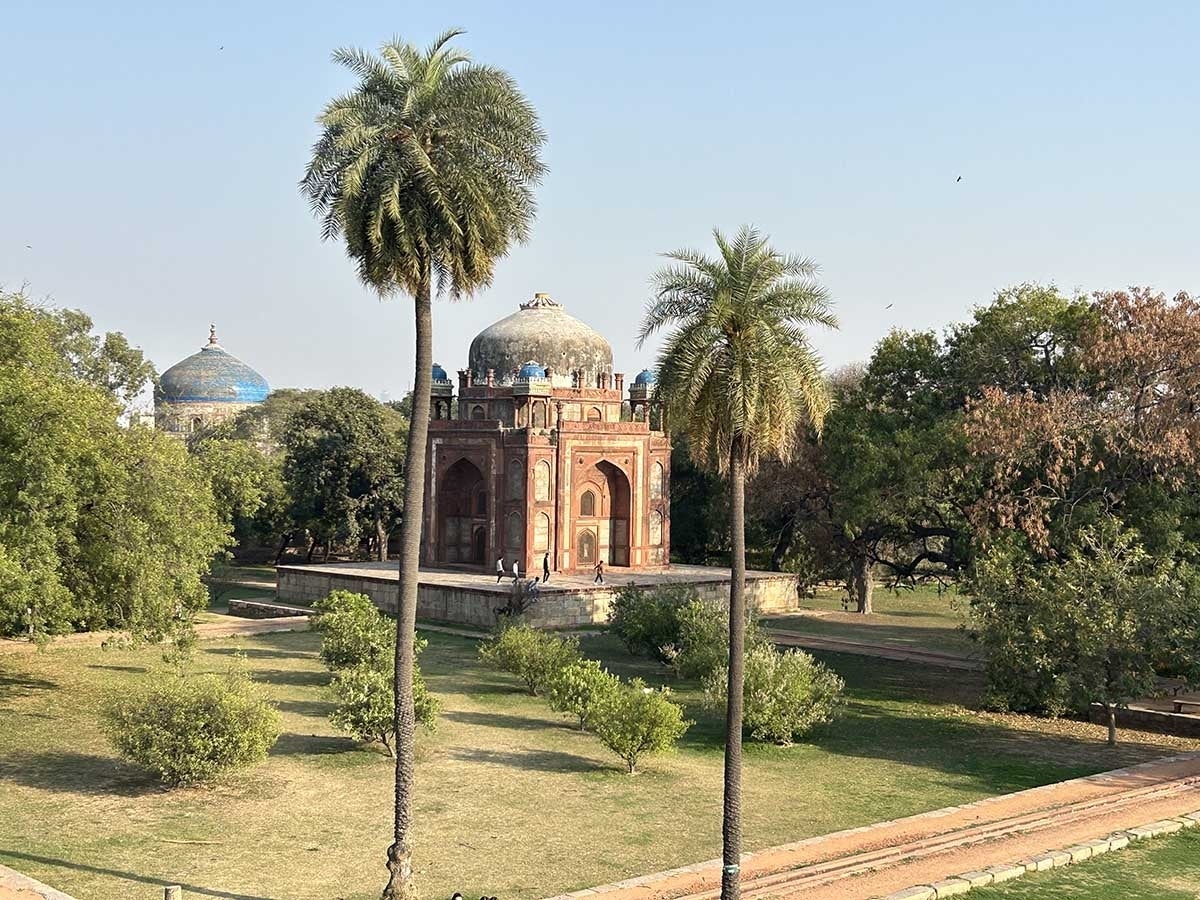
All that is to say, reflecting on the pilot for this Doctoral Institute and envisioning the potential future iterations of this program, I am filled with awe at the transformative power of this experience. The magic of visiting India and uniting scholars from diverse backgrounds facilitates networks that are truly expansive. Certainly, these transnational connections play a pivotal role in advancing comparative research on media technologies and cultures, bridging the gap between different regions and enriching both Global South and Western scholarship alike.
Building on the positive outcomes of this pilot, I look forward to seeing the development of the program and what next year's institute in New Delhi will offer!
And on a personal note, the chance to return to India after a decade was a significant milestone for me. Having been raised in London and spending significant time in India during my childhood summers, and now living in Philadelphia (of all places), I've traversed diverse cultural landscapes that have shaped my identity and world-making practices. Ultimately, through these experiences, I've come to understand the profound impact of global media and communication. In particular, looking at global media and communication as a lens serves as a reminder of our innate ability for genuine human connection amidst change and uncertainty on a global scale. It offers us a platform to reimagine our potential, create, and ultimately find new ways of existing and figuring out ways for this to be ok…
ਪੜ੍ਹਨ ਲਈ ਧੰਨਵਾਦ!



